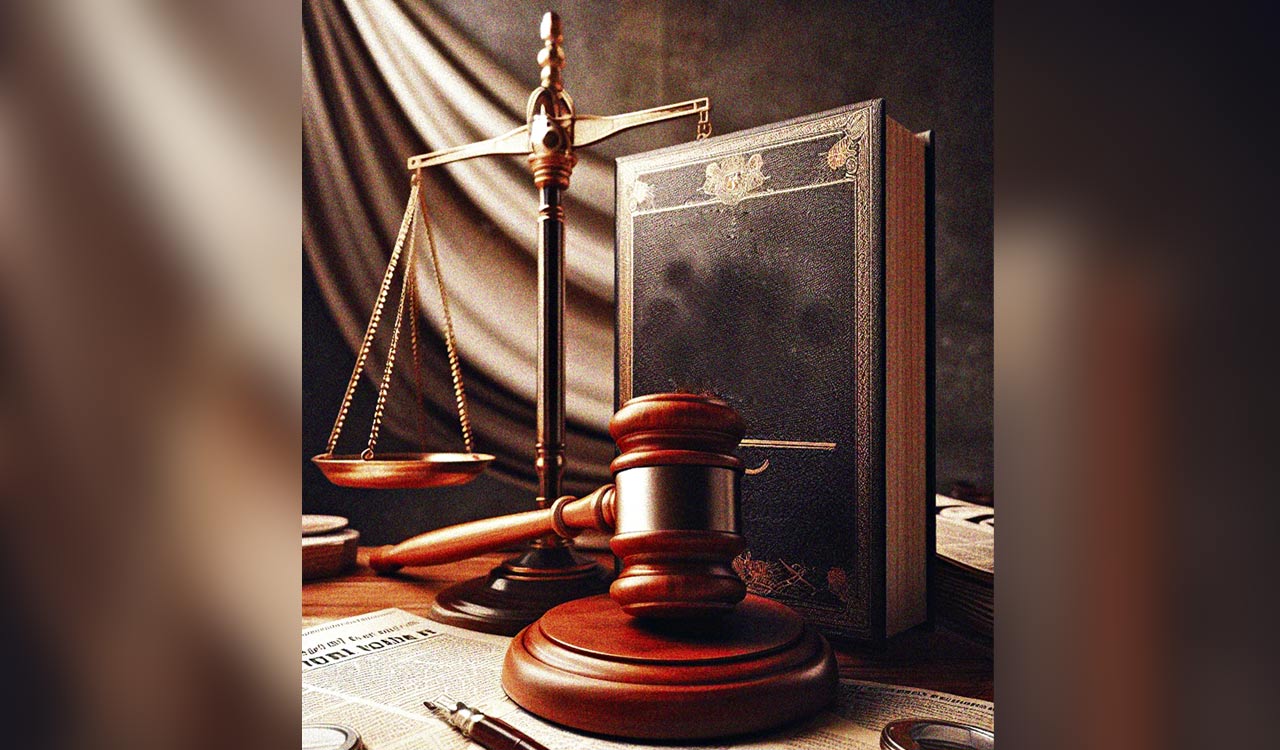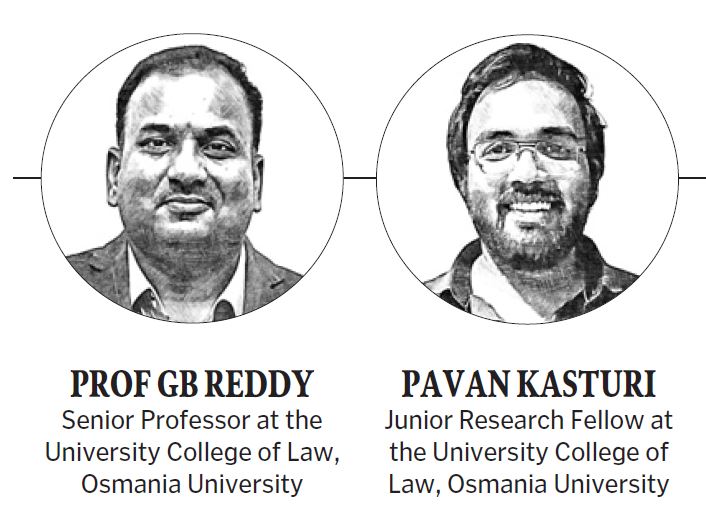NCRB Legal Service Beneficiaries Report (2016-2019) shows that only 7.91% of under-trials utilised their entitled legal aid services, raising concerns about the system’s effectiveness
Published Date – 11:45 PM, Wed – 8 November 23

By Prof Dr GB Reddy, Pavan Kasturi
Every year on November 9 we celebrate National Legal Services Day marking the commencement of the Legal Services Authorities Act (LSA), in 1995. This legislation is a testament to our constitutional commitment, especially under Article 39A, which places an obligation on the state to provide free legal aid and to ensure access to justice.
Although incorporated through the 42nd Constitutional Amendment, providing free legal aid is a tenet within our Constitution, as the rule of law itself hinges on the accessibility of legal support. Yet, the real challenge lies in effectively implementing this assurance for the indigent and legal illiterates. Data from the NCRB Legal Service Beneficiaries Report (2016-2019) shows that only 7.91% of under-trials utilised their entitled legal aid services and nearly 68% of under-trials are illiterates, highlighting concerns about the system’s effectiveness.
Evolution of the Right
While Article 39A was introduced as a Directive Principle (DPSP) in 1976, it had limited impact until the Supreme Court developed legal aid jurisprudence. In the M H Hoskot Case (1978), Justice Krishna Iyer interpreted the Maneka Gandhi Case (1978) and positioned the right to free legal aid to operate by the force of Article 21 in the Constitution. He highlighted the necessity for statutory laws to ensure a fair legal procedure. This transformative stance effectively reclassified the provision of free legal aid from a DPSP to a fundamental right.
Subsequently, Justice Bhagwati left an indelible mark through his two judgments – in the Hussainara Khatoon case (1979), which dealt with the suffering of under-trial prisoners in Bihar enduring years of detention without trial, and in the Bhagalpur Blinding case (1981), where law enforcement personnel were implicated in a horrifying act of blinding under-trial prisoners with acid. He affirmed that legal aid is a non-negotiable requirement, and the state cannot use budgetary constraints as a shield. As a result, legal aid became embedded within the very fabric of the judicial system.
In 1977, a two-member expert committee comprising J Iyer and J Bhagwati proposed a comprehensive legal aid legislation draft. In 1980, the Committee for Implementing Legal Aid Schemes (CILAS) was established as a nationwide model programme, leading to the formation of legal aid boards in all States. Later, in 1987 the Legal Services Authority (LSA) Act was enacted mandating the creation of legal services authorities at various levels.
Recently in 2022, the National Legal Services Authority (NALSA) introduced the groundbreaking Legal Aid Defense Counsel Scheme (LADCS) where free legal aid would be offered to individuals in police custody and defendants in criminal cases as part of the public defence system. A team of dedicated lawyers, similar to public prosecutors, would be appointed on a fixed monthly salary and exclusively handle these cases. If fully executed, this programme could significantly benefit under-trial detainees and indigent defendants in criminal cases.
What does it Entail
Legal aid is not just a state’s duty but an entitlement to the accused, even in heinous cases like the Mumbai attacks involving Ajmal Kasab. The SC’s stance is clear that failure to provide a lawyer at trial commencement vitiates the entire process. It encompasses legal representation in criminal, civil and administrative cases, as well as educating disadvantaged individuals about their rights. It assists marginalised groups such as women, STs and SCs, disabled individuals, disaster victims and human trafficking survivors. Legal aid also includes public interest litigation, conducting socio-legal surveys, covering court expenses, document retrieval and appeal preparation for eligible recipients.
Barriers, Breakthroughs
One of the notable issues concerning legal aid lies in the quality of services rendered by Legal Aid Counsels (LACs). In many instances, individuals only turn to legal aid as a last resort, often preferring private legal services. There is a dire need for rebranding the legal aid clinics. This improved perception fosters trust, which is crucial for a beneficiary’s satisfaction, ultimately strengthening the legal aid movement.
But, LACs face the challenges of low honorariums and delayed payments. Further, inadequate resources, such as libraries and meeting spaces exacerbate the situation. Introducing LADCS in select Indian districts seems to offer a solution to these problems. However, there is a need for swift expansion to encompass many more regions. Another issue is with the process of impaneling competent LACs, as this typically prioritises years of practice over the quality of service, thus lacking a standardised measure for inclusion. For example, as pointed out in the Mohd Hussain case (2012), the SC pointed out that the LAC appointed failed to appear and even cross-examine witnesses. While LADCS has prescribed specific standard criteria for advocates in criminal trials, there is a similar requirement to extend this standardisation to other types of cases.
Current legal aid talks consider broadening legal services access by permitting non-lawyers to represent clients in tribunals and commissions. Interestingly, the Advocates Act of 1961 allows advocates to teach, while this isn’t reciprocated for law teachers, despite many being registered advocates. Granting law teachers limited practice privileges could improve legal aid. Nevertheless, an effective strategy is to regulate legal professionals to compulsorily undertake certain pro bono cases through legal aid clinics.
The expanded use of technology and virtual practice, especially in lower courts, would allow lawyers to manage numerous pro-bono cases remotely, even from remote areas. This would substantially reduce both litigation delays and costs. Further, recognising a law student’s role is essential. Integrating holistic clinical legal education not only equips them to comprehend socio-legal issues but also enables them to assist individuals who do not have access to legal representation.
Finally, putting the Gram Nyayalayas Act, 2008, into action as intended is vital because it is a promising policy that has remained unimplemented. This step would guarantee quick access to justice, especially in India’s rural regions. One must grasp that legal aid not only safeguards liberty but also upholds dignity and acts as a bulwark against poverty.






